Potential Use of COVID-19 Surgical Masks and Polyethylene Plastics in Developing Sustainable Concrete
Abstract
:1. Introduction
2. Materials and Methods
2.1. Materials and Mix Compositions
2.2. Samples Preparation and Testing Methods
3. Results and Discussion
3.1. Workability of Mask and Plastic Concrete
3.2. Dry Density of Concrete Samples
3.3. Mechanical Strength of Mask and Plastic Concrete
3.4. Water Absorption and Pore Volume in Mask and Plastic Concrete
3.5. Electrical Resistivity of the Concrete Samples
3.6. Microstructural Analysis of Concrete
4. Conclusions and Recommendations
Author Contributions
Funding
Data Availability Statement
Acknowledgments
Conflicts of Interest
References
- Selvaranjan, K.; Navaratnam, S.; Rajeev, P.; Ravintherakumaran, N. Environmental challenges induced by extensive use of face masks during COVID-19: A review and potential solutions. Environ. Chall. 2021, 3, 100039. [Google Scholar] [CrossRef]
- Fadare, O.O.; Okoffo, E.D. COVID-19 face masks: A potential source of microplastic fibers in the environment. Sci. Total Environ. 2020, 737, 140279. [Google Scholar] [CrossRef] [PubMed]
- Prata, J.C.; Silva, A.L.; Walker, T.R.; Duarte, A.C.; Rocha-Santos, T. COVID-19 pandemic repercussions on the use and management of plastics. Environ. Sci. Technol. 2020, 54, 7760–7765. [Google Scholar] [CrossRef] [PubMed]
- Ajam, L.; Trabelsi, A.; Kammoun, Z. Valorization of face mask waste in mortar. Innov. Infrastruct. Solut. 2022, 7, 130. [Google Scholar] [CrossRef]
- Rohden, A.B.; Camilo, J.R.; Amaral, R.C.; Garcez, E.O.; Garcez, M.R. Effects of plastic waste on the heat-induced spalling performance and mechanical properties of high strength concrete. Materials 2020, 13, 3262. [Google Scholar] [CrossRef] [PubMed]
- Voskresenskaya, E.; Vorona-Slivinskaya, L.; Panov, S. Legal regulation of environmental protection, management of natural resources, and environmental safety in construction sector. MATEC Web Conf. 2018, 193, 02025. [Google Scholar] [CrossRef]
- Ragossnig, A.M.; Schneider, D.R. Circular economy, recycling and end-of-waste. Waste Manag. Res. 2019, 37, 109–111. [Google Scholar] [CrossRef]
- Shooshtarian, S.; Maqsood, T.; Caldera, S.; Ryley, T. Transformation towards a circular economy in the Australian construction and demolition waste management system. Sustain. Prod. Consum. 2022, 30, 89–106. [Google Scholar] [CrossRef]
- Idrees, M.; Akbar, A.; Mohamed, A.M.; Fathi, D.; Saeed, F. Recycling of waste facial masks as a construction material, a step towards sustainability. Materials 2022, 15, 1810. [Google Scholar] [CrossRef]
- Kilmartin-Lynch, S.; Saberian, M.; Li, J.; Roychand, R.; Zhang, G. Preliminary evaluation of the feasibility of using polypropylene fibres from COVID-19 single-use face masks to improve the mechanical properties of concrete. J. Clean. Prod. 2021, 296, 126460. [Google Scholar] [CrossRef]
- Parija, S.; Mishra, D.; Leung, C. Preliminary Results of Concrete with Shredded Disposable Face Masks. In Proceedings of the 35th Indian Engineering Congress (IEC)—Engineering for Self Reliance and Sustainable Goals, Online, 18–20 December 2020. [Google Scholar]
- Ali, M.; Opulencia, M.J.C.; Chandra, T.; Chandra, S.; Muda, I.; Dias, R.; Jalil, A.T. An environmentally friendly solution for waste facial masks recycled in construction materials. Sustainability 2022, 14, 8739. [Google Scholar] [CrossRef]
- Castellote, M.; Jiménez-Relinque, E.; Grande, M.; Rubiano, F.J.; Castillo, Á. Face mask wastes as cementitious materials: A possible solution to a big concern. Materials 2022, 15, 1371. [Google Scholar] [CrossRef] [PubMed]
- Miah, M.J.; Pei, J.; Kim, H.; Sharma, R.; Jang, J.G.; Ahn, J. Property assessment of an eco-friendly mortar reinforced with recycled mask fiber derived from COVID-19 single-use face masks. J. Build. Eng. 2023, 66, 105885. [Google Scholar] [CrossRef]
- Liang, C.; Ma, H.; Pan, Y.; Ma, Z.; Duan, Z.; He, Z. Chloride permeability and the caused steel corrosion in the concrete with carbonated recycled aggregate. Constr. Build. Mater. 2019, 218, 506–518. [Google Scholar] [CrossRef]
- Paul, S.C.; Babafemi, A.J. A review of the mechanical and durability properties of strain-hardening cement-based composite (SHCC). J. Sustain. Cem.-Based Mater. 2018, 7, 57–78. [Google Scholar] [CrossRef]
- Rahim, N.L.; Sallehuddin, S.; Ibrahim, N.M.; Che Amat, R.; Ab Jalil, M.F. Use of plastic waste (high-density polyethylene) in concrete mixture as aggregate replacement. Adv. Mater. Res. 2013, 701, 265–269. [Google Scholar] [CrossRef]
- Lee, Z.H.; Paul, S.C.; Kong, S.Y.; Susilawati, S.; Yang, X. Modification of waste aggregate PET for improving the concrete properties. Adv. Civ. Eng. 2019, 2019, 6942052. [Google Scholar] [CrossRef]
- Belmokaddem, M.; Mahi, A.; Senhadji, Y.; Pekmezci, B.Y. Mechanical and physical properties and morphology of concrete containing plastic waste as aggregate. Constr. Build. Mater. 2020, 257, 119559. [Google Scholar] [CrossRef]
- Jacob-Vaillancourt, C.; Sorelli, L. Characterization of concrete composites with recycled plastic aggregates from postconsumer material streams. Constr. Build. Mater. 2018, 182, 561–572. [Google Scholar] [CrossRef]
- Babafemi, A.J.; Šavija, B.; Paul, S.C.; Anggraini, V. Engineering properties of concrete with waste recycled plastic: A review. Sustainability 2018, 10, 3875. [Google Scholar] [CrossRef]
- Adnan, M.; Xiao, B.; Xiao, P.; Zhao, P.; Bibi, S. Heavy metal, waste, COVID-19, and rapid industrialization in this modern era—Fit for sustainable future. Sustainability 2022, 14, 4746. [Google Scholar] [CrossRef]
- Torres, F.G.; De-la-Torre, G.E. Face mask waste generation and management during the COVID-19 pandemic: An overview and the Peruvian case. Sci. Total Environ. 2021, 786, 147628. [Google Scholar] [CrossRef]
- Agamuthu, P.; Barasarathi, J. Clinical waste management under COVID-19 scenario in Malaysia. Waste Manag. Res. 2021, 39, 18–26. [Google Scholar] [CrossRef] [PubMed]
- Mangindaan, D.; Adib, A.; Febrianta, H.; Hutabarat, D.J.C. Systematic literature review and bibliometric study of waste management in Indonesia in the COVID-19 pandemic era. Sustainability 2022, 14, 2556. [Google Scholar] [CrossRef]
- Lawler, J.S.; Zampini, D.; Shah, S.P. Microfiber and macrofiber hybrid fiber-reinforced concrete. J. Mater. Civ. Eng. 2005, 17, 595–604. [Google Scholar] [CrossRef]
- BS-1881:116; Testing Concrete Part 116. Method for Determination of Compressive Strength of Concrete Cubes. British Standards Institution: London, UK, 1983.
- BS-1881:117; Testing Concrete Part 117. Method for Determination of Tensile Splitting Strength. British Standards Institution: London, UK, 1983.
- ASTM C642-21; Standard Test Method for Density, Absorption, and Voids in Hardened Concrete. ASTM International: West Conshohocken, PA, USA, 1996.
- ACI 211.1-91; Standard Practice for Selecting Proportions for Normal, Heavyweight, and Mass Concrete. ACI: Farmington Hills, MI, USA, 1991.
- Rai, B.; Rushad, S.T.; Kr, B.; Duggal, S.K. Study of waste plastic mix concrete with plasticizer. ISRN Civ. Eng. 2012, 2012, 469272. [Google Scholar] [CrossRef]
- Hu, C.; De Larrard, F.; Gjørv, O.E. Rheological testing and modelling of fresh high performance concrete. Mater. Struct. 1995, 28, 1–7. [Google Scholar] [CrossRef]
- Roussel, N. Correlation between yield stress and slump: Comparison between numerical simulations and concrete rheometers results. Mater. Struct. 2006, 39, 501–509. [Google Scholar] [CrossRef]
- Khalid, F.S.; Irwan, J.M.; Ibrahim, M.W.; Othman, N.; Shahidan, S. Performance of plastic wastes in fiber-reinforced concrete beams. Constr. Build. Mater. 2018, 183, 451–464. [Google Scholar] [CrossRef]
- Bhogayata, A.C.; Arora, N.K. Impact strength, permeability and chemical resistance of concrete reinforced with metalized plastic waste fibers. Constr. Build. Mater. 2018, 161, 254–266. [Google Scholar] [CrossRef]
- Kim, S.B.; Yi, N.H.; Kim, H.Y.; Kim, J.H.J.; Song, Y.C. Material and structural performance evaluation of recycled PET fiber reinforced concrete. Cem. Concr. Compos. 2010, 32, 232–240. [Google Scholar] [CrossRef]
- Mohammadinia, A.; Wong, Y.C.; Arulrajah, A.; Horpibulsuk, S. Strength evaluation of utilizing recycled plastic waste and recycled crushed glass in concrete footpaths. Constr. Build. Mater. 2019, 197, 489–496. [Google Scholar] [CrossRef]
- Lakshmi, R.; Nagan, S. Investigations on durability characteristics of E-plastic waste incorporated concrete. Asian J. Civ. Eng. 2011, 12, 773–787. [Google Scholar]
- Hannawi, K.; Kamali-Bernard, S.; Prince, W. Physical and mechanical properties of mortars containing PET and PC waste aggregates. Waste Manag. 2010, 30, 2312–2320. [Google Scholar] [CrossRef] [PubMed]
- Saikia, N.; de Brito, J. Mechanical properties and abrasion behaviour of concrete containing shredded PET bottle waste as a partial substitution of natural aggregate. Constr. Build. Mater. 2014, 52, 236–244. [Google Scholar] [CrossRef]
- Alqahtani, F.K.; Ghataora, G.; Khan, M.I.; Dirar, S.; Kioul, A.; Al-Otaibi, M. Lightweight concrete containing recycled plastic aggregates. In Proceedings of the 2015 ICMEP, Paris, France, 13–14 April 2015. [Google Scholar]
- Kou, S.C.; Lee, G.; Poon, C.S.; Lai, W.L. Properties of lightweight aggregate concrete prepared with PVC granules derived from scraped PVC pipes. Waste Manag. 2009, 29, 621–628. [Google Scholar] [CrossRef]

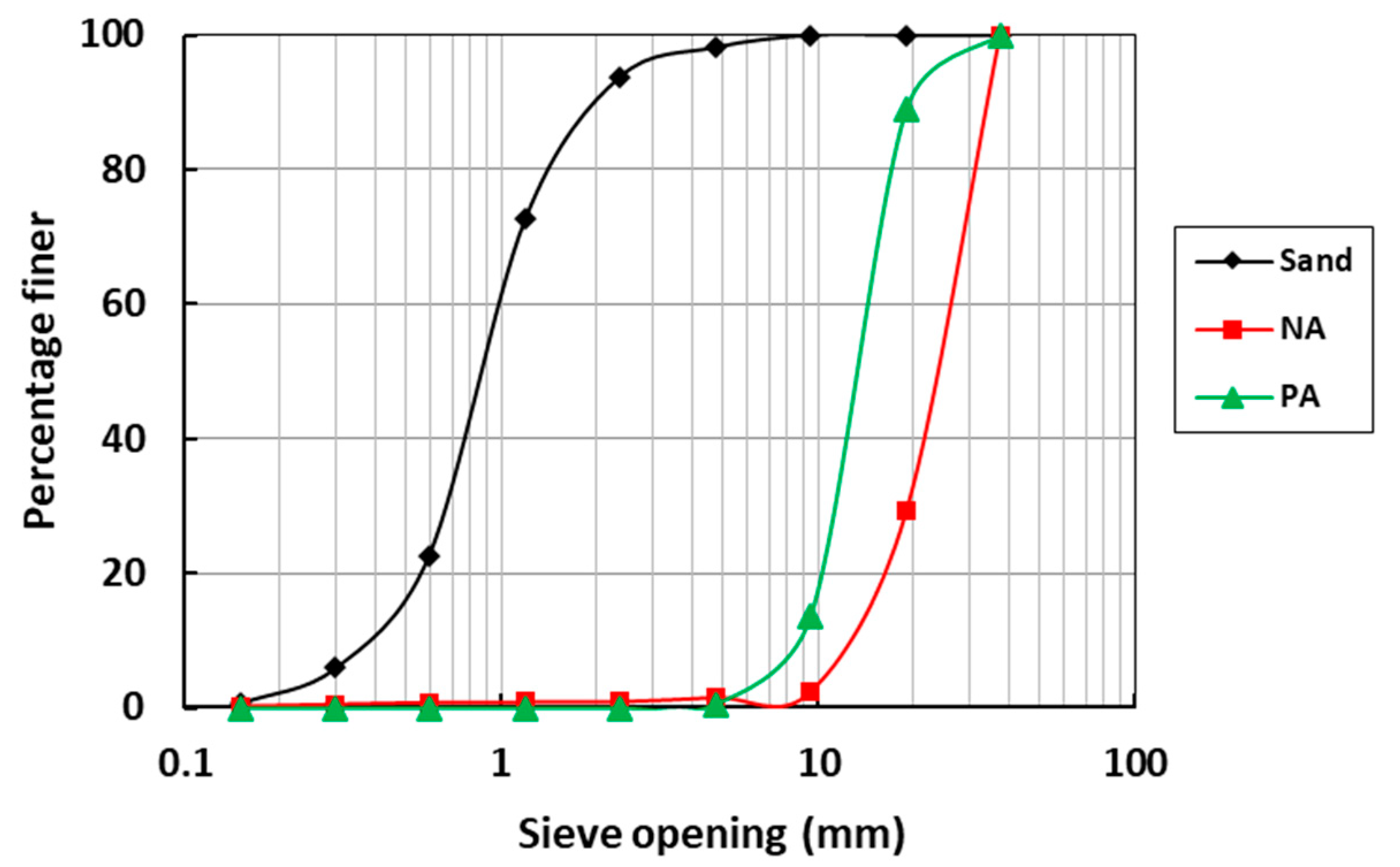




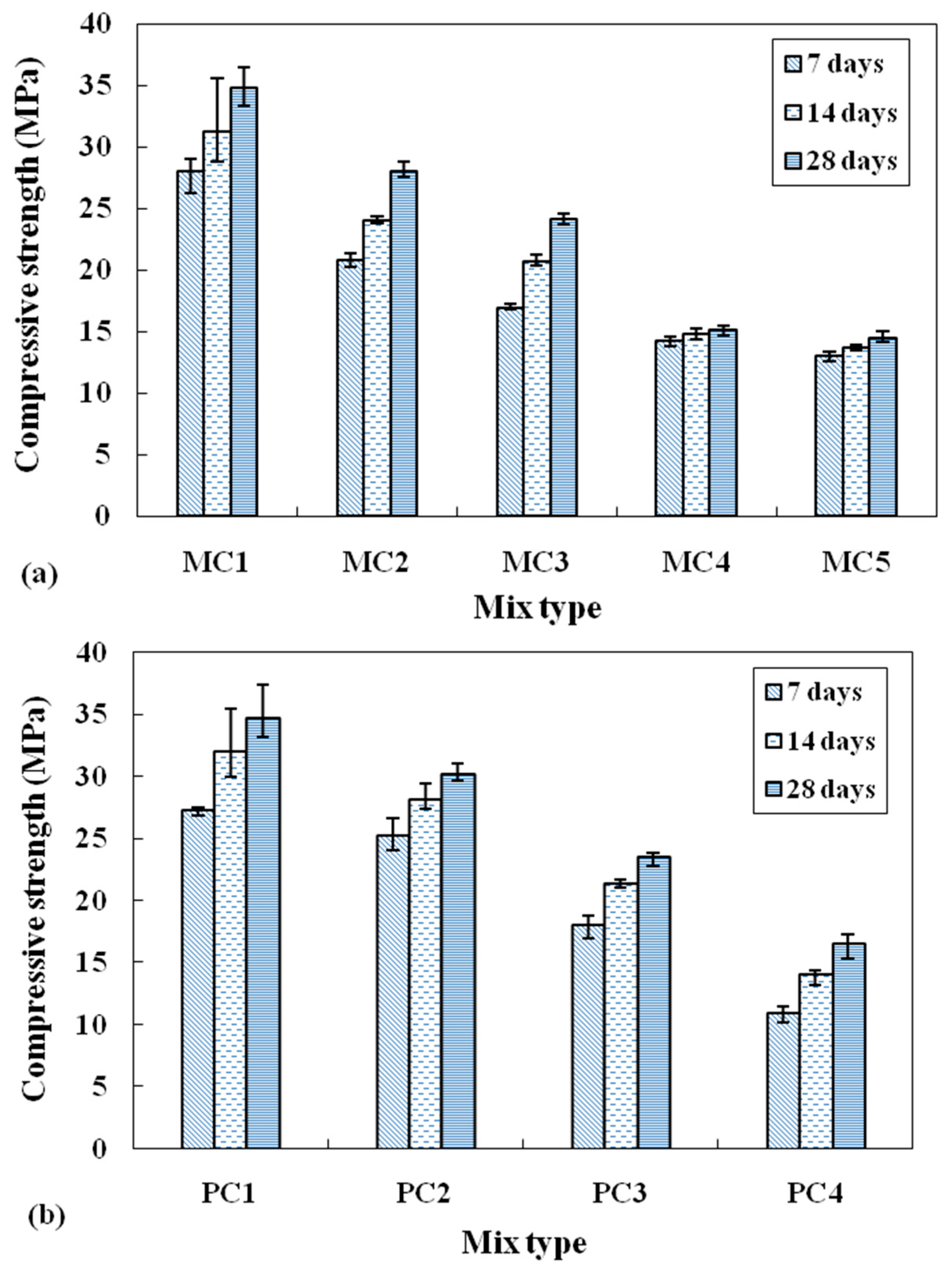
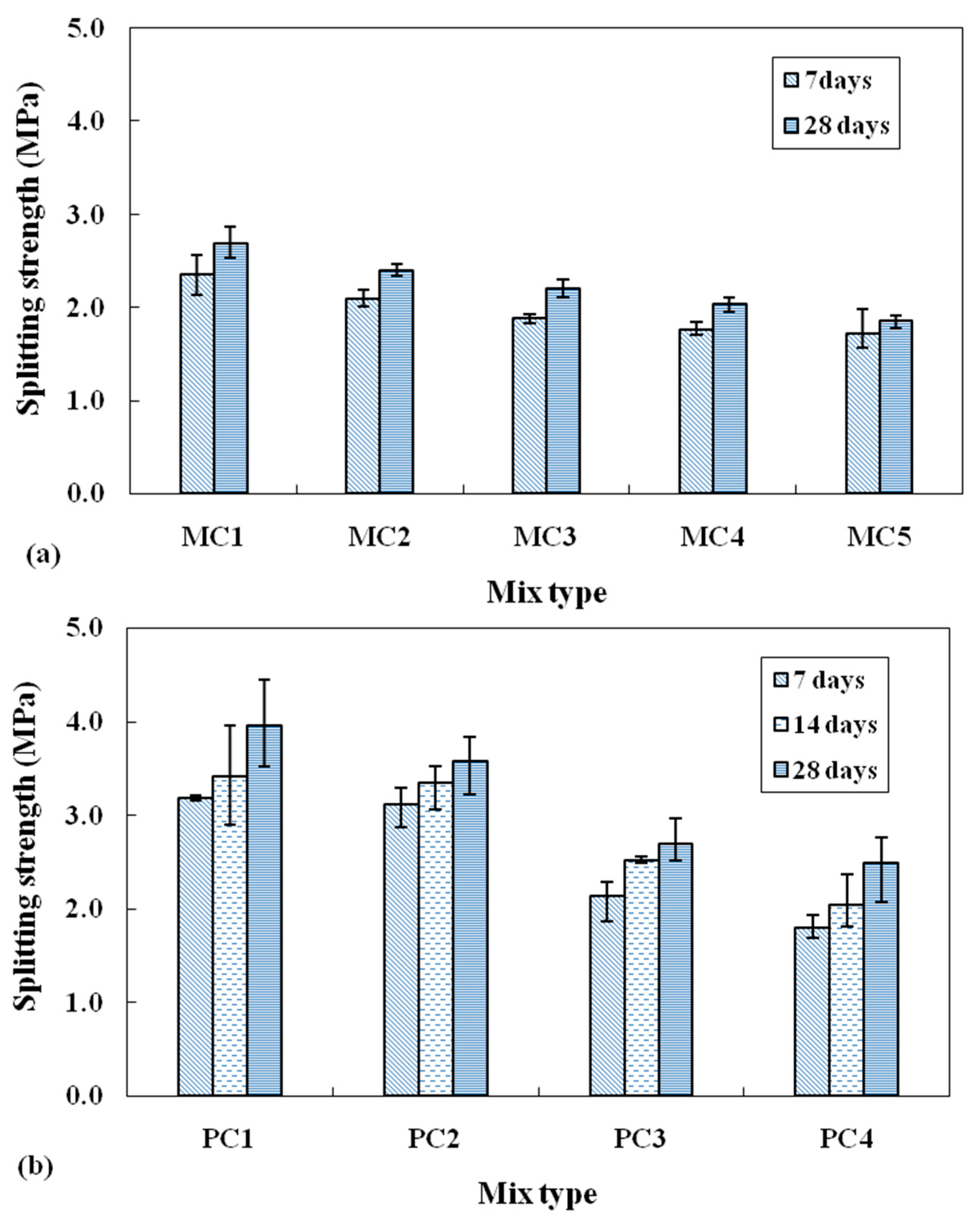


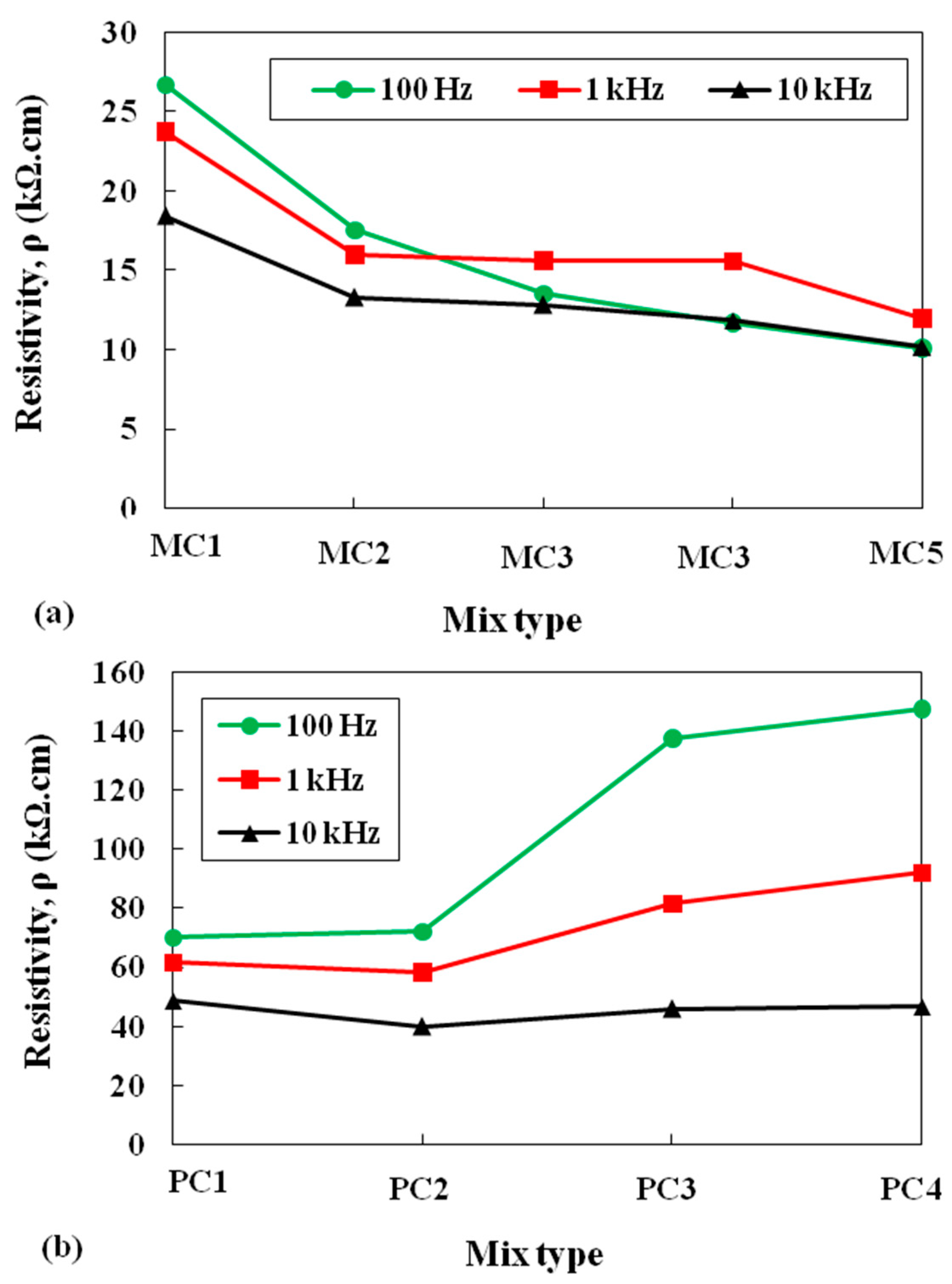
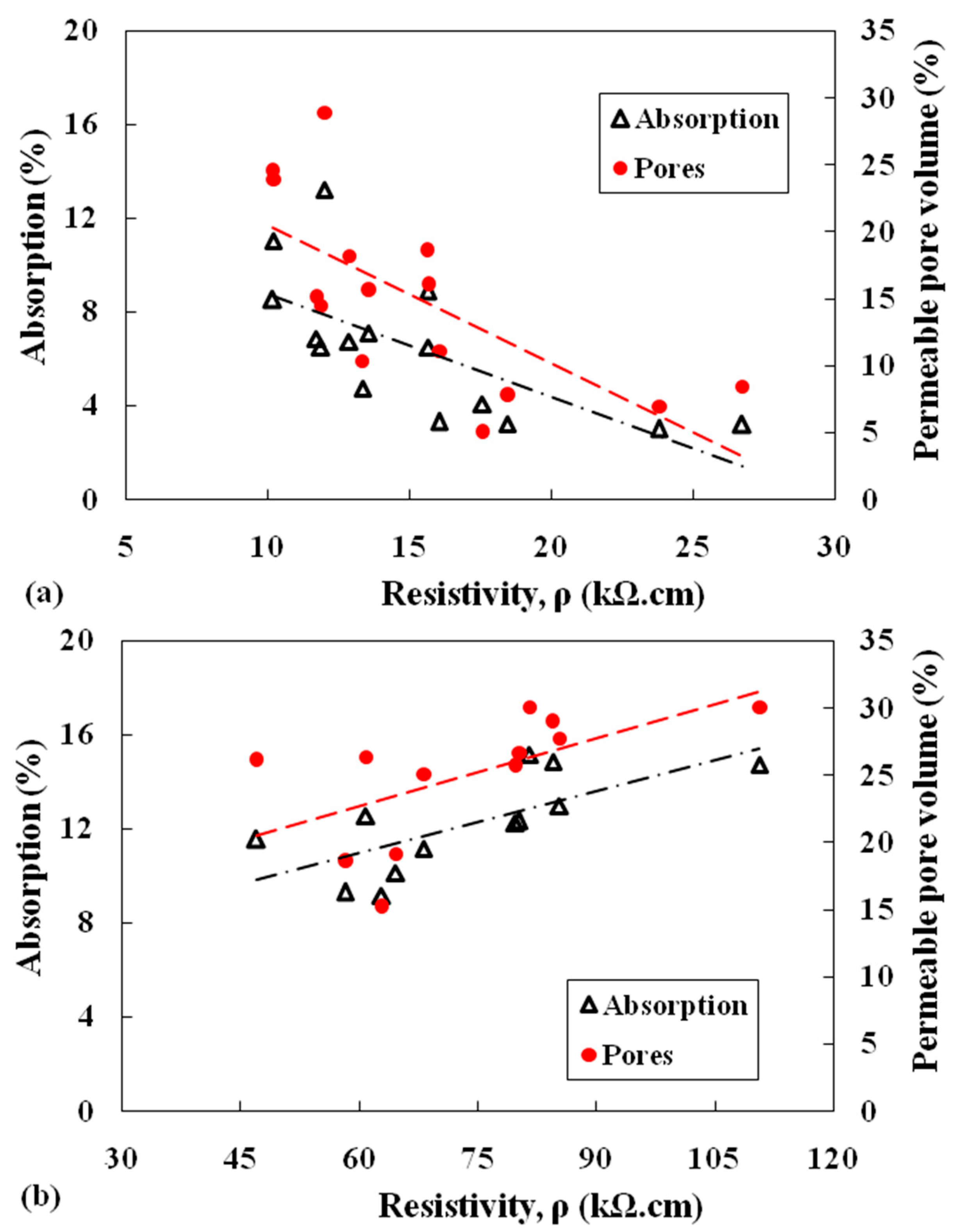

| Specific gravity | 0.91 |
| Melting point | 160 °C |
| Water absorption | 8.9% at 24 h |
| Tensile strength at breaking point | 3.97 MPa |
| Elongation at break | 119% |
| Mix ID | Cement | CA | Sand | Water | Mask Strip | PA |
|---|---|---|---|---|---|---|
| MC1 | 463.35 | 1094.5 | 739.84 | 208.51 | 0 | - |
| MC2 | 460.84 | 1088.56 | 735.82 | 207.38 | 5.25 | - |
| MC3 | 458.35 | 1082.68 | 731.85 | 206.26 | 10.46 | - |
| MC4 | 455.89 | 1076.87 | 727.92 | 205.15 | 15.6 | - |
| MC5 | 453.45 | 1071.12 | 724.03 | 204.05 | 20.69 | - |
| PC1 | 446.8 | 969.23 | 645.38 | 201.06 | - | 0 |
| PC2 | 418.32 | 907.45 | 604.24 | 188.24 | - | 61.73 |
| PC3 | 392.98 | 852.47 | 567.63 | 176.84 | - | 116.66 |
| PC4 | 370.89 | 804.57 | 535.74 | 166.9 | - | 164.52 |
Disclaimer/Publisher’s Note: The statements, opinions and data contained in all publications are solely those of the individual author(s) and contributor(s) and not of MDPI and/or the editor(s). MDPI and/or the editor(s) disclaim responsibility for any injury to people or property resulting from any ideas, methods, instructions or products referred to in the content. |
© 2023 by the authors. Licensee MDPI, Basel, Switzerland. This article is an open access article distributed under the terms and conditions of the Creative Commons Attribution (CC BY) license (https://creativecommons.org/licenses/by/4.0/).
Share and Cite
Paul, S.C.; Santo, M.A.H.; Nahid, S.A.; Majumder, A.R.; Al Mamun, M.F.; Basit, M.A.; Babafemi, A.J. Potential Use of COVID-19 Surgical Masks and Polyethylene Plastics in Developing Sustainable Concrete. J. Compos. Sci. 2023, 7, 402. https://doi.org/10.3390/jcs7090402
Paul SC, Santo MAH, Nahid SA, Majumder AR, Al Mamun MF, Basit MA, Babafemi AJ. Potential Use of COVID-19 Surgical Masks and Polyethylene Plastics in Developing Sustainable Concrete. Journal of Composites Science. 2023; 7(9):402. https://doi.org/10.3390/jcs7090402
Chicago/Turabian StylePaul, Suvash Chandra, Md. Ahosun Habib Santo, Sowmik Ahmed Nahid, Asifur Rahman Majumder, Md. Fahim Al Mamun, Md Abdul Basit, and Adewumi John Babafemi. 2023. "Potential Use of COVID-19 Surgical Masks and Polyethylene Plastics in Developing Sustainable Concrete" Journal of Composites Science 7, no. 9: 402. https://doi.org/10.3390/jcs7090402









